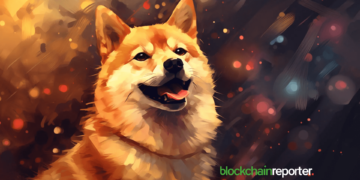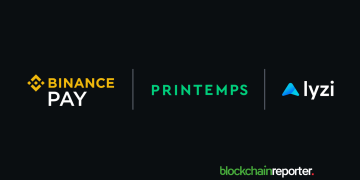DappRadar released a new industry report for the blockchain sector in May 2022. The report shows that the sector has become quite resilient even in the face of crypto winter, triggered by the collapse of Terra. According to the report, GameFi, and NFTs are showing signs of growth and maturity, while DeFi seems to be on the path to recovery.
The Bad News
As expected, the collapse of Terra, which was formerly the second-biggest DeFi ecosystem, features heavily in the report. Their report triggered a domino effect that ushered in the latest crypto winter. Bitcoin went into a death spiral, falling below $30,000 for the first time since December 2020. It has been bad news throughout the sector.
Several altcoins have lost up to 90% market cap from their peak in November 2021. DApp activity has also fallen sharply to reach its lowest point in 2022 at 2.22 million daily Unique Active Wallets (UAW) in May. This figure is a 5% drop month on month, although it is still 32% higher than the same period in 2021. One network that stands out is Solana, which has seen usage break through the 200,000 UAW figure for the first time in its history despite numerous disruptions to the network.
The DappRadar Positives
There is still some good news to report in May. The report shows that the DApp sector has remained quite resilient. NFT markets have been evolving with novel projects like Otherside and Goblintown launching in the sector. These projects helped to propel virtual worlds to their best month ever.
Blockchain games have seen a slight decrease in users. However, they continue to pile on VC investments that are keeping the bullish momentum going. Besides that, leading DeFi networks are in serious contention for the market share that the collapse of Terra left.
Notable Developments
DeFi has lost close to 45% of its value amidst the collapse of Terra, while Uniswap hit new records by surpassing the total traded volume of $1 trillion. The leading DEX has also extended its feature into Optimism and Polygon.
$3.7 billion in sales were made in the NFT sector in May, which is a 20% drop from the same period in April. However, the sector is only down 6.5% when measured in total NFTs traded.
Otherside posted the best month of an NFT collection selling over $750 million in NFTs, which propelled virtual worlds to their best month ever with over $850 million in sales made in May.
Blockchain games have been the most resilient in the face of crypto winter, losing only 5% in activity, and experiencing 197% year-on-year growth with VC investments piling up.
The Collapse of Terra
On May 9, the Terra ecosystem came to a halting crash, which was one of the most memorable crashes in the history of crypto. UST, which was the third biggest stablecoin at the time, fell to 35 cents. It sent a wave of volatility throughout the sector, which saw most stablecoins saw their peg for a while. The Luna Foundation Guard tried to use $3.5 billion in Bitcoin to keep UST afloat but it eventually failed.
On May 12, the Terra network was halted. At the end of it, over $60 billion had vanished in less than 72 hours, representing one of the biggest wealth wipeouts in recent memory. It led to a pressure effect on BTC, which led to fear and panic throughout the crypto sector, helping to crystallize the crypto winter.
After its collapse, Do Kwon, the Terra co-founder, announced plans to revive Terra via a hard fork, leading to Terra 2.0, which launched on May 28. LUNA Classic token holders were given the new LUNA tokens but with a 99% loss in value. It is not over yet for Do Kwon as authorities in South Korea have announced an investigation into the situation.
Terra fell sharply by the end of May, which was in stark contrast to the end of April when the ecosystem had $25 billion in TVL. It will be difficult for it to regain its status in the DeFi space.
DeFi Loses 45% of Its Valuation
DeFi has faced the most heat since the collapse of Terra. It has experienced a loss of 45% in TVL from the end of April. That is quite huge in comparison to BTC and Ethereum (ETH), which lost 25% and 40% respectively. Nonetheless, at the current valuation of around $117 billion in TVL, it has grown 11% from the same period in 2021.























